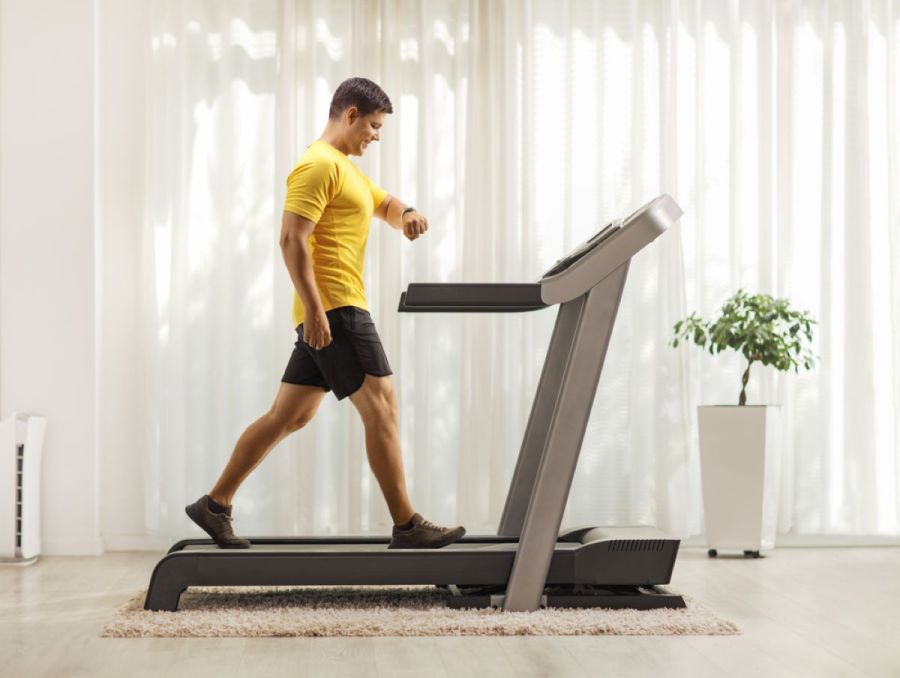Learn how to use your treadmill more effectively so you can run smarter all year round…
Jumping on a treadmill is often a runner’s last resort, even though it’s a great bit of kit for cardio work. When the darker days descend and the cold weather bites, sometimes blasting music through your running headphones and hitting the ‘dreadmill’ is the only way to clock your training miles.
And while indoor sessions might come second best to fresh air and distracting views, stepping onto the belt does have some upsides. For example, treadmills are great for controlling speed and incline for interval sessions and ‘hill’ runs, plus you’re never far from a warm shower.
If you find yourself heading for the ‘mills this winter, it’s important to learn how to use your treadmill effectively so you can get the most out of your workouts. Here are six tips to up your indoor running game…
How to use a treadmill effectively
1. Recreate pavement running
Running on the bouncy treadmill can feel easier than plodding the pavements outside. If you want to mimic outdoor running conditions more accurately, set the treadmill incline to 1-2%. Some experts also suggest running 3-6% faster on a flat belt to create a more realistic equivalent to real-world effort.
2. Mix up your intensity
Whether you’re running indoors or outdoors, the 80/20 rule of intensity is a great way to balance your training effort levels. First evidenced by Dr Stephen Seiler, research also shows that splitting your weekly training so that you do 80% at an easy level (conversational pace or lower), along with the other 20% done hard at moderate to high intensity, can be the ticket to faster running.
3. Use controlled progression
Choose your treadmill workouts wisely. The running machine is a great tool for sessions where you need precise control over your environment. For example, interval workouts where you’re targeting a certain pace. Or hill reps where you need to climb at a target gradient or a set time (it’s not always easy to find a minute-long hill). Treadmills are also great for progression runs. This is because it’s much easier to gradually increase the intensity and fine tune your efforts by upping the speed or incline.
4. Watch yourself in a mirror
Mirrors in front of treadmills aren’t just there for checking if your guns are growing. They’re also great for spotting kinks in your running form, particularly when fatigue sets in. After all, if you want to learn how to use a treadmill more effectively, it’s crucial to focus on your form.
Using a mirror provides an easy way to observe the finer elements of your running technique – whether you’ve got tight shoulders, clenched fists or a nodding head. Plus, with fewer distractions and an even surface, it’s also a chance to focus on your stride, cadence and breathing.
5. Add some wearable tech
From running watches and heart rate chest straps, to foot-worn trackers like the COROS Pod 2, many Bluetooth wearables can now share data with your treadmill. Some treadmills even send data back to your running watch to plug gaps, too. Syncing these gadgets will help improve the accuracy of important stats such as distance covered and heart-rate-based insights like calories burned. It’ll also ensure those Strava logs are spot on.
6. Call in the virtual trainers
If you’re unsure how to structure a good session, or you just need the added motivation of a coach barking orders at you, virtual coached treadmill sessions are now really easy to access. And you don’t have to own a pricey Peloton Tread to make the most of them either. Jump on any treadmill armed with your phone and an app membership. Then, you can access hundreds of live and on-demand workouts.
If you fancy trying Peloton, there’s a three-day free trial (subs from £12.99 per month). Apple Watch owners and iOS users can also dip into the Apple Fitness+ growing catalogue of coached runs with a three-month free trial (subs from £9.99 per month).






